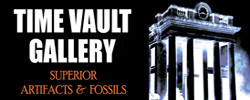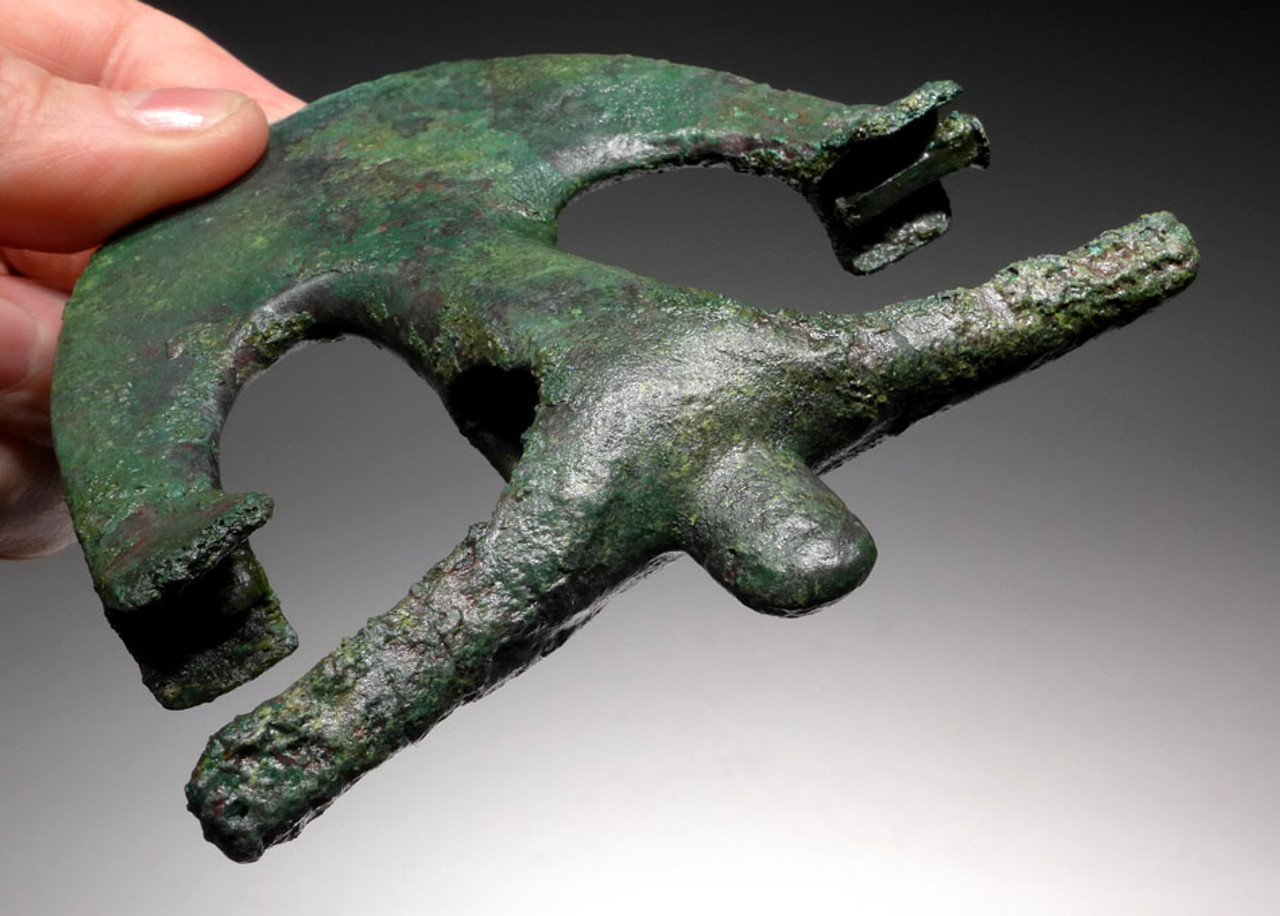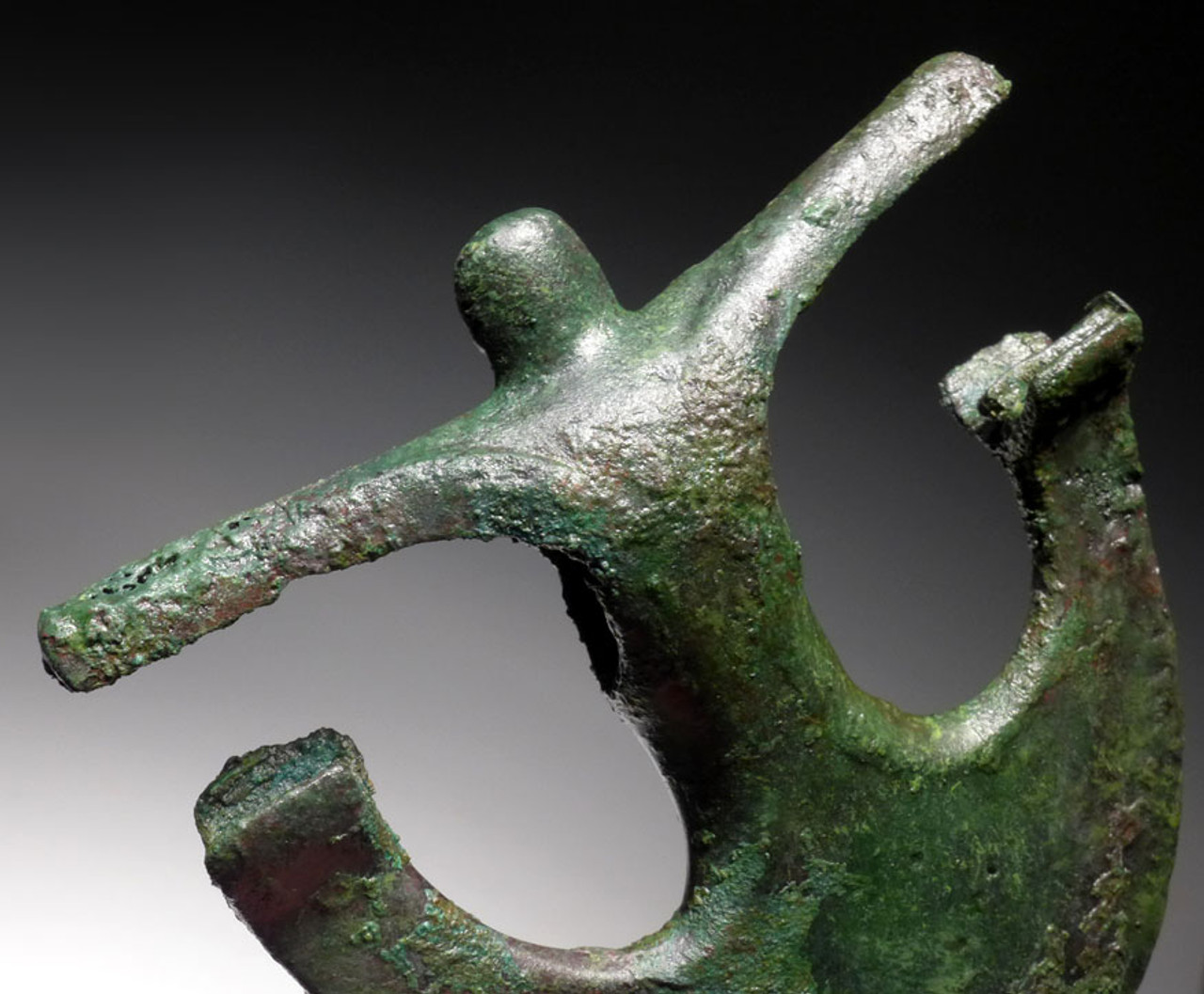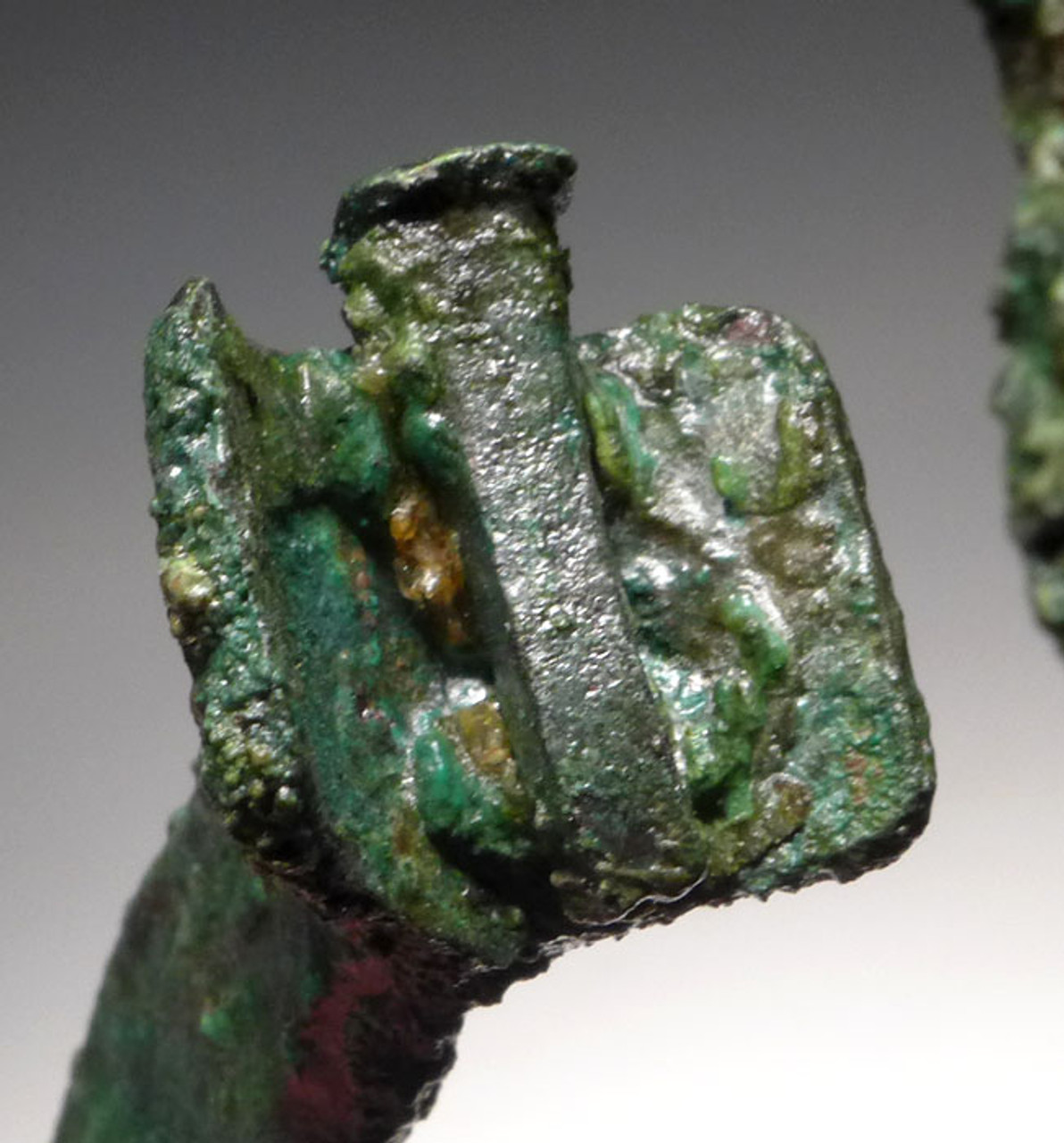Product Description
ITEM #
|
NE150
|
||
ID
|
Axe
|
||
FOUND
|
Ancient Near East
|
||
AGE
|
BRONZE AGE: 4000 - 3500 years ago
|
||
SIZE
|
4" x 4" overall
|
||
CONDITION
|
INTACT AND COMPLETE WITH ANCIENT
|
||
NOTE
|
THE RAREST AXE TYPE OF THIS BRONZE AGE
|
||
INCLUDES DISPLAY BOX - Actual Item - One Only
Comes with a certificate of authenticity / information sheet |
|||
The crescent anchor axe of the Luristan Bronze Age Culture is one of the most elusive weapons to acquire. Very few are known compared to all other types of Bronze Age axes in this genre. The earliest form of shaft hole axes in the Near and Middle Eastern Bronze age was an axe called a "duck bill" axe and most likely, the anchor axe followed behind it in the concept of a crescent cutting edge mounted over a wooden handle. The design though, of this axe is THE MOST COMPLEX of ANY Bronze Age shaft axe. Note the wooden shaft would have been inserted into the axe with exposed sides and the front and back portions of the axe gripping the shaft. No other axe type has ever been made this complex. Perhaps this was THE HIGHEST form of prestige in a war axe. The scarcity of this type cannot be overstated. Out of a museum we are affiliated with, we know of no example in the collection despite thousands of rare specimens comprising the collection. In the market, we have only seen four or five for sale. The last two examples we know of offered publicly, both sold for prices in excess of $5000. This is certainly one of the rarest and most desirable forms known and we are proud to offer an exceptional example here for a much lower price than seen elsewhere.
What makes this an especially fine specimen of a CRESCENT ANCHOR AXE is the fact that one of the original bronze nails is still present, mineralized to the shaft support, as it was when once embedded in wood that wedged the axe to the shaft. Another prize feature is the presence of substantial remains of the wooden handle, fully mineralized and attached to the interior of the axe.
This example possesses the FINEST preservation and patina we have seen with absolutely no corrosion or damage whatsoever. The malachite mineral encrustations display a rich green hue over the dark brown bronze. As decorative a design these axes were, they are also highly effective in combat, able to cut a broad and deadly blow with severe force. An EXTREMELY RARE FORM of a MUSEUM-CLASS ancient Bronze Age war axe from the ancient Near East!
This specimen has been professionally cleaned and conserved in our lab, being treated with a special sealer developed and formulated by us specifically for ancient metal preservation. The patina shows beautiful traits only found in authentic ancient weapons. It is a patina like this that the finest ancient bronzes are prized for and it is a patina like this that brings a premium in price and value of the specimen. INTACT WITH NO REPAIR OR RESTORATION. No active bronze disease. Bronze disease can be a problem in bronze artifacts and untreated, it can literally eat away an artifact over a short time of a matter of years and turn the piece to powder.
WARNING: There is an increasing number of fake Near Eastern (Luristan) bronze weapons on the market. As fine quality intact, original specimens become more scarce and techniques have become more sophisticated to fake these weapons. We have personally handled numerous extremely well-done fakes with extremely convincing patinas. The degree to which the fakers have been able to replicate patina to disguise their work requires an expert examination by highly experienced individuals. It is common to find very reasonably priced weapons that are made up of part original and part modern components or wholly modern pieces displaying elaborate artificial patinas. All purchases should include from the dealer a written guarantee of authenticity with unconditional and lifetime return policies regarding such guarantee.
The term LURISTAN references artifacts made by a society of semi-nomadic people that once lived in the mountainous region of Northwest Iran. Little is known of this ancient culture but the most impressive traces are that of the bronze artifacts they left behind that can be found in parts of present-day Turkey, Iran and Afghanistan. These include highly decorative equipment for their horses, ceremonial containers and numerous weapons ranging from simple utilitarian pieces on up to elaborate masterpieces of warfare.
It is theorized that the Luristan bronzes were crafted by the earliest existence of the Median empire but this has never been proven as written records of the Medes have not survived. The Medes were Indo-Iranian people originally from central Asia who settled in Northwest Iran in the 9th century BC and later defeated the Assyrian empire in 614 BC. Their success is short-lived and their empire which once stretched from central Iran to the Persian Gulf and Anatolia was overrun in 550 BC by the Persians.
 US DOLLAR
US DOLLAR
 EURO
EURO
 AUSTRALIAN DOLLAR
AUSTRALIAN DOLLAR
 CANADIAN DOLLAR
CANADIAN DOLLAR
 POUND STERLING
POUND STERLING






















